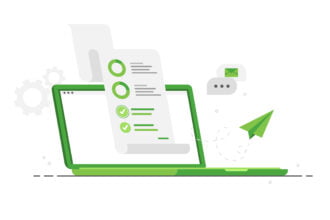The number of companies advertising Analytics as one of their service offerings leaves me astounded. I also come across an endless number of people who say they are into Analytics.
Maybe all this has to do with the very broad definition of Analytics. Or the way some people/companies interpret Analytics. A little more research, and a few more minutes of conversation reveals that the “Analytics” these companies or people actually do is just report.…
The number of companies advertising Analytics as one of their service offerings leaves me astounded. I also come across an endless number of people who say they are into Analytics.
Maybe all this has to do with the very broad definition of Analytics. Or the way some people/companies interpret Analytics. A little more research, and a few more minutes of conversation reveals that the “Analytics” these companies or people actually do is just reporting. Personally speaking, I feel “Analytics” has become a widely misinterpreted and misused term.
According to Gartner, “Analytics leverage data in a particular functional process (or application) to enable context-specific insight that is actionable.”
The latest sascom online magazine describes the eight levels of Analytics, from the simplest to the most advanced.
1. STANDARD REPORTS
What happened? When did it happen?
E.g. Monthly or quarterly financial reports.
Generated on a regular basis, they just describe “what happened” in a particular area. They’re useful to some extent, but not for making long-term decisions.
2. AD HOC REPORTS
How many? How often? Where?
E.g. Custom reports that describe the number of hospital patients for every diagnosis code for each day of the week.
At their best, ad hoc reports let you ask the questions and request a couple of custom reports to find the answers.
3. QUERY DRILLDOWN (OR OLAP)
Where exactly is the problem? How do I find the answers?
E.g. Sort and explore data about different types of cell phone users and their calling behaviors.
Query drilldown allows for a little bit of discovery. OLAP lets you manipulate the data yourself to find out how many, what color and where.
4. ALERTS
When should I react? What actions are needed now?
E.g. Sales executives receive alerts when sales targets are falling behind.
With alerts, you can learn when you have a problem and be notified when something similar happens again in the future. Alerts can appear via e-mail, RSS feeds or as red dials on a scorecard or dashboard.
5. STATISTICAL ANALYSIS
Why is this happening? What opportunities am I missing?
E.g. Banks can discover why an increasing number of customers are refinancing their homes.
Here we can begin to run some complex analytics, like frequency models and regression analysis. We can begin to look at why things are happening using the stored data and then begin to answer questions based on the data.
6. FORECASTING
What if these trends continue? How much is needed? When will it be needed?
E.g. Retailers can predict how demand for individual products will vary from store to store.
Forecasting is one of the hottest markets – and hottest analytical applications – right now. It applies everywhere. In particular, forecasting demand helps supply just enough inventory, so you don’t run out or have too much.
7. PREDICTIVE MODELING
What will happen next? How will it affect my business?
E.g. Hotels and casinos can predict which VIP customers will be more interested in particular vacation packages.
If you have 10 million customers and want to do a marketing campaign, who’s most likely to respond? How do you segment that group? And how do you determine who’s most likely to leave your organization? Predictive modeling provides the answers.
8. OPTIMIZATION
How do we do things better? What is the best decision for a complex problem?
E.g. Given business priorities, resource constraints and available technology, determine the best way to optimize your IT platform to satisfy the needs of every user.
Optimization supports innovation. It takes your resources and needs into consideration and helps you find the best possible way to accomplish your goals.






